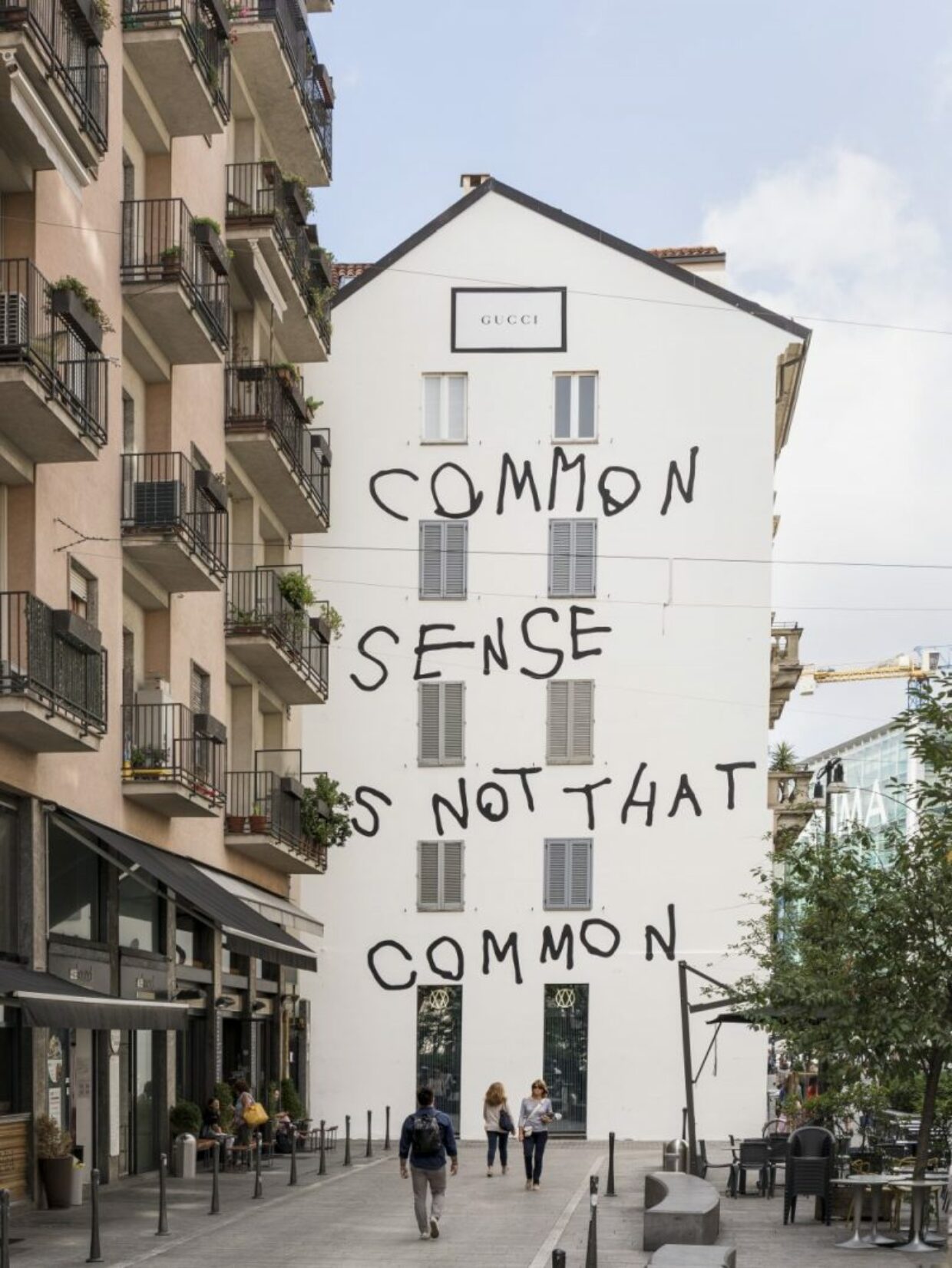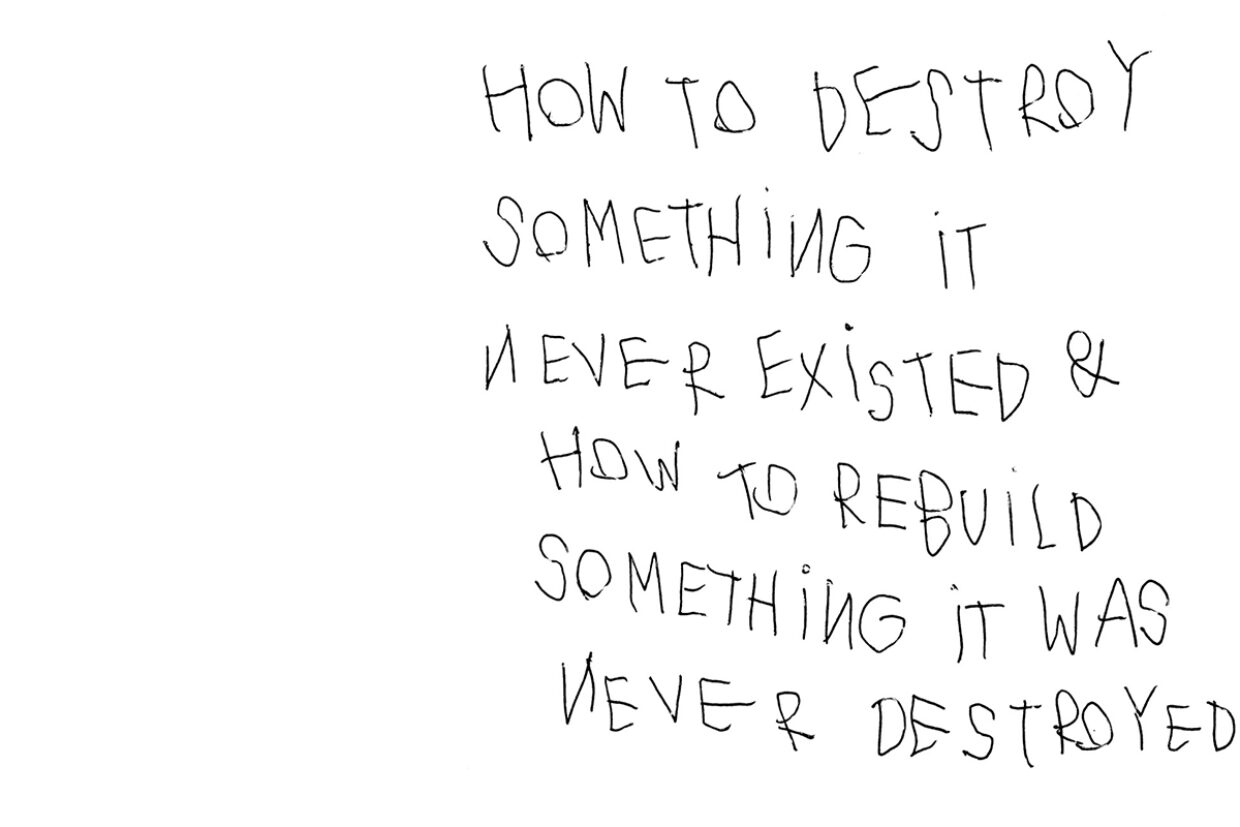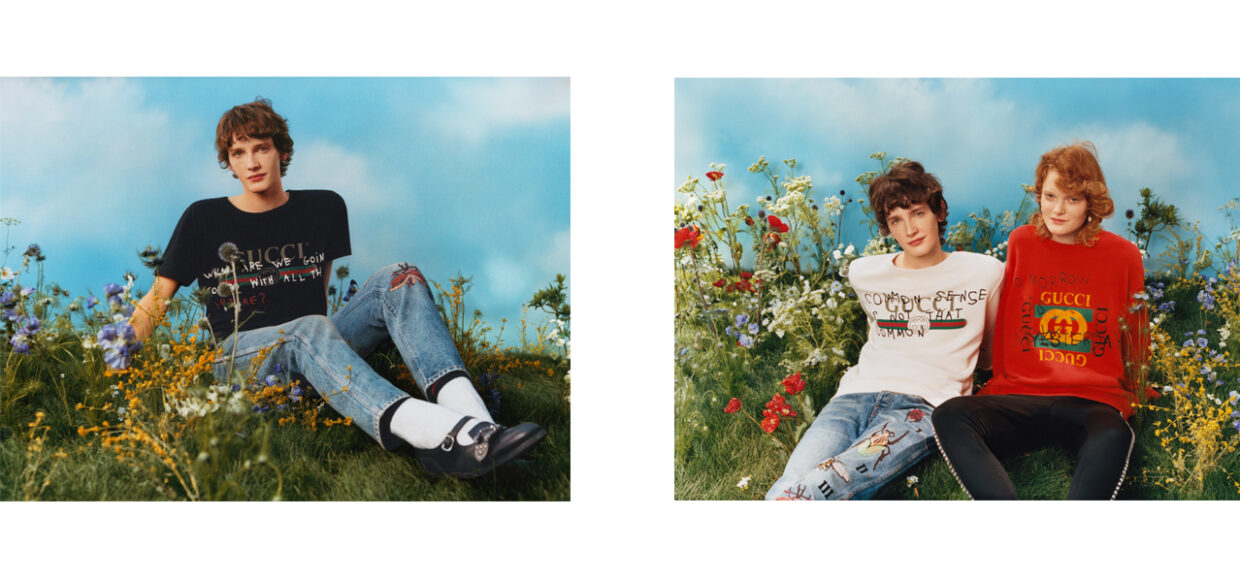Coco Capitán ‘Our Entire Life is Built on Remembering’
May. 14, 2018
You only have to look at her short explosive career to see that. Off to London by the fragile age of 17, her first solo exhibition by 22 and a masters degree at 23. There’s a sense that Coco knows exactly how the planets are to be aligned for her.
But a serendipitous interaction over social media in 2014 at the hands of Gucci’s creative director Allesandro Michelle accelerated this process even quicker.
Michelle was so taken by her work that he put the full weight of the luxury powerhouse Gucci behind her. Her mysterious almost haiku-like lyrics have since graced the sides of city buildings from Milan to New York, not to mention most of Gucci’s luxury wear.
“What are we going to do with all this future?” or “I want to go back to believing in a story.” at first seem simplistic but are altogether existential landmines. Perhaps they’re not meant to be analyzed at all, but part of an ephemeral culture where you are to consume and move forward.
In the last few years, her photography work has been lumped together with contemporaries like Petra Collins and Harley Weir, but she’s got no time for lazy adjectives like the female gaze. She’s an authentic & provocative voice in a noisy landscape creating a body of work that is at once flirtatious, sophisticated but also mysterious and playful.
Now with two feet firmly established in the fashion world, Coco has begun to forge her own path creating a body of work which stands out far from the field she’s been associated with. With a ‘top secret exciting’ project under wraps to be released later this year, these are signals of what looks set to be a long career. Where she goes to next remains up to her.
I find you moving to London at 17 from a more provincial area was a big step how did you cope with that out of curiosity?
Moving to London from my relatively rural town of birth in Southern Spain was a daunting step, yes. But one that had to be taken, in order to develop my life and artist career. So many times in my professional and personal life, I have had to make a daunting step with so many things unresolved. This is always the right decision in the end, and everything will resolve itself eventually. If you never make these big steps you will live always in regret.
Is it true that you spent your youth dreaming of being a synchronized swimmer in the Olympics?
When I was younger I competed intensively in synchronised swimming, and it taught me some important lessons – work ethic, collaborating as a team, etc. I think it’s important to try and do something to the best of your ability at one part of your life, even if it becomes nearly all-consuming, to know your own limits. Finally this year I returned to Spain to photograph the Olympic Synchronised Swimming team, and they inspire me with their dedication to sport and life.
Tell us a quote that you feel connected to?
“I never have taken a picture I’ve intended. They’re always better or worse” -Diane Arbus.
Judging from your work you clearly believe in the power of words and the language people use to create meaning and the different reactions and interpretations it can produce in people. What is the relationship between image and words for you?
Words are art just as images are, I think that much has been shown these days, in art spanning the last 10,000 years. The joy of words is how easy they are to put together, and because this is easy everyone does it, so when people speak in their own way, they are creating their own art, even if they don’t realise it.
“When people speak in their own way, they are creating their own art, even if they don’t realise it.”
In your work, it seems like you’re trying to get back to the innate and almost instinctive reaction that language can create in a person. Would you agree with that?
Yes, I do. And why be unnecessarily academic about the spoken word?
Is there a particular audience who your work is for? Do you have an audience in mind?
I’d like to think everyone can get something out of my work, no matter who they are or where they come from. One of the joys of being an artist is seeing how three different people might take three different meanings from the same picture, text, or painting. That’s always a pleasure.
I find there is a cheekiness to your work perhaps, would you care to comment on this aspect?
Like most people, sometimes I am serious, sometimes less so. So it would be a shame to only make “serious art”, as that would exclude this side of my personality.
You have said (in reference to the #gucciartwall murals) you enjoy how ‘different platforms kind of complement each other and they are not exclusive on their own’. How important is this kind of mixing and crossing of mediums and platforms in your work?
The mixing of platforms gives me new ideas for my work all the time. Imagine a text piece of one sentence, printed on a small piece of paper that would fit in the palm of your hand. Then imagine the same one sentence piece taking up a whole wall of a building. Isn’t it interesting how one’s experience of the same art changes when the scale changes?
What’s it like to see your work plastered on a 2,500 sq ft wall?
You certainly get a thrill from that.
Thoughts about past and present and future (and the relationship between them) seem to appear frequently in your work. For example, the phrase ‘I want to go back to believing a story’ evokes a childlike sense of the past. What role do you think the idea of nostalgia has in your work?
Nostalgia is the act of remembering in a fond way, and our entire life is built on remembering. As I write this sentence the previous sentence is now in the past, being tucked into my memory along with everything else. Our life is only the present moment and the remembered moment, and it is worth engaging with both equally.
You have been lumped in at times with a new class of female photographers such as Petra Collins and Harley Weir. Do you think it is counterintuitive to think about photography as separated into male and female gazes?
Whilst I can’t speak for everyone, I personally would like it to be possible for anyone to have the viewpoint they want, not just “male” or “female” gaze.
As a young creative building a portfolio and career what one thing would you say is hardest to navigate?
When to say no.
“Our life is only the present moment and the remembered moment, and it is worth engaging with both equally.”
What are your reading right now and why is it important?
Pretentiousness: Why it Matters by Dan Fox. Self-explanatory.
When you’re not working what are you doing?
I’m always working!
I really like the line “What are we going to do with all this future?” what are you saying with this?
Whatever you think this means – that’s what it means.
What’s the next major thing that is coming up for you?
I have something very exciting happening later this year. But for now it’s top secret.
Source: 52 INSIGHTS





